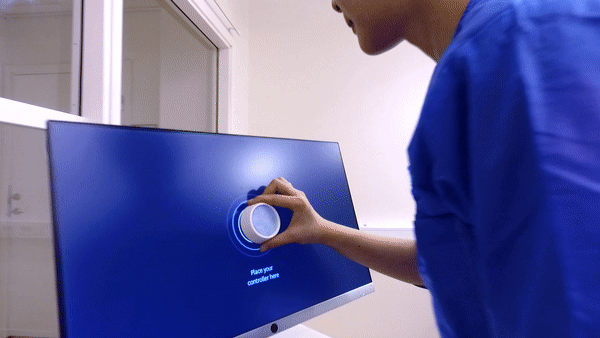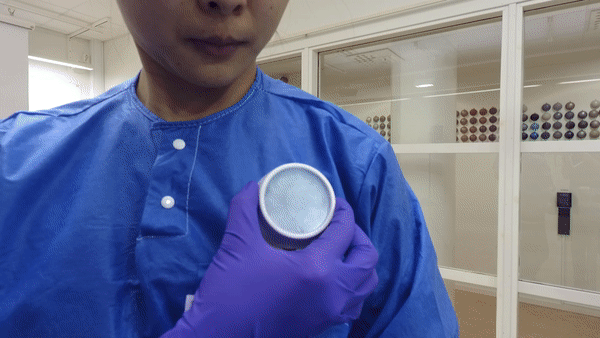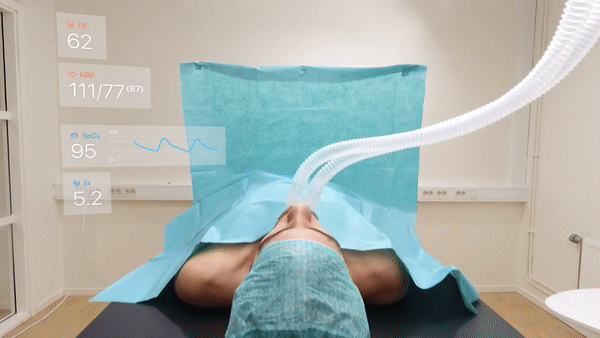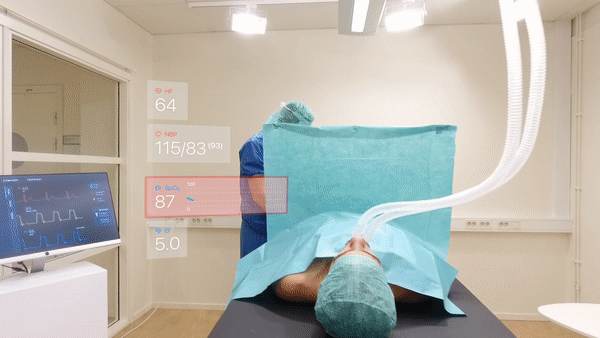top of page
Anesthesia Augmented
DESIGNERS / SEBASTIAN DE CABO / IVAN KUNJASIC / MICHELLE CHOW
10 WEEKS / GROUP PROJECT / INTERACTION DESIGN MASTERS
Re-imagine the anesthesia machine for the year 2030 to be used as inspiration by Getinge for the future vision of the company and their products.
Our main aim for the design was to find the way to keep the nurses' attention on the patient instead spending most of their time with their backs turned on their patients in order to look at the machine screens.
"Augmenting ourselves rather than replacing ourselves"

Every surgery is unique, so the nurse can personalise what data to take into the AR system for each patient

The wearable chest piece not only controls the system, but also transports the data

The information travels with the nurse and is viewed through the glasses

Right data at the right time - Instead of overwhelming the nurse by showing all the data constantly, we reduce the amount of information shown at all times, giving the nurse the control so they can choose what to view.

Information is located based on context i.e. listening to the lungs is seen on top of the chest of the patient

The nurse can change values through the controller on their chest without having to take their eyes away from the patient for too long

Sudden alarms can add too much stress in the worst possible time, so the alarm slowly increases to reduce the surprise factor and to give more preparation time.
"Human-computer symbiosis is making us more capable"
Behind the process
My role in this project was really varied, we tried not to divide roles too much but work all together as close as possible - design togetherness.
I helped carry out the research, visiting different hospitals and talking to several users, as well as ideation, developing prototypes and testing them, and finally creating the story and the presentation videos.
Process video highlighting the development and user testing stages.
"We're not just redesigning a machine, we're redesigning an experience"

We visited two different hospitals and involved many different users from Maquet and the hospital at Umeå all throughout the process to achieve this user-centered design



During our research phase we realised all the different complexities the anaesthetist have to tackle on their day-to-day and we chose to focus on the ones highlighted above - we felt these ares would automatically improve the other areas in the diagram, as we didn't have time to solve everything.

The idea would be to combine what machines do best while keeping or enhancing the human side of medical care - empathising and caring about patients as more than just a number


Once we chose AR as the technology to fulfil our goal of simplifying the interaction complexities, it felt like a new project started - we had to figure out how to use the technology in the best way possible using general research on linked topics, for example ergonomics of vision.

One of the most challenging parts of the process was how to create AR prototypes with no previous knowledge or tools to create these prototypes, but by using what's already out there in creative ways.


What this concept means for doctors/nurses

What this concept means for Maquet


We ended up with more questions than answers for Maquet, but the important part was were these questions were heading, we felt it's important for them to really dig into the possibilities of AR technology and not stay stuck with translating current screens into an AR system.


bottom of page

